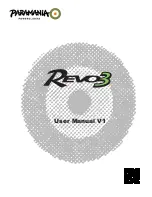
SECONDARY
SUPPLEMENTAL
SEAT STOP
AIRPLANE FLIGHT MANUAL
ground egress is required after a forced landing or ditching.
WARNING
The pilot seat cannot be moved aft appreciably without
releasing both the normal locking device and the secon-
dary seat stop simultaneously.
SECTION 4
NORMAL PROCEDURES
During the Preflight Inspection, test the pilot's seat for proper
operation by releasing the seat locking pins, moving the seat full forward,
and then pushing the seat aft. If operating normally, rearward movement
of the seat will be stopped when the aft roller housing on the seat
contacts the secondary seat stop.
Then momentarily unlatch the
secondary seat stop and move the seat farther aft to test that each seat
stop plate tab contacts the secondary seat stop to restrict seat
movement. When the seat is again moved full forward, the secondary
seat stop should momentarily rotate to an unlatched position to allow the
passage of each stop plate tab and the aft seat roller housing.
The pilot should demonstrate the operation of all seats to the
passengers before flight.
SECTION 5
PERFORMANCE
There is no change to the airplane performance when the pilot's
secondary seat stop is installed.
4
Original Issue
FAA APPROVED
Airplane Flight Manual Supplement
FOR
Serial No.
Registration No.
This supplement must be attached to the Pilot's Operating Handbook/FAA
Approved Airplane Flight Manual when the Secondary Seat Stop
modification is installed in accordance with Cessna Single-Engine Service
Bulletin SEB89-2.
The information contained herein supplements or supersedes the
information of the basic Pilot's Operating Handbook/FAA Approved
Airplane Flight Manual and Checklists.
For limitations, procedures, and
performance information not contained in this supplement, consult the
basic Pilot's Operating Handbook/FAA Approved Airplane Flight Manual.
COPYRIGHT
1989
CESSNA AIRCRAFT COMPANY
WICHITA, KANSAS, USA
D1325-13
Original Issue - 24 March 1989














































